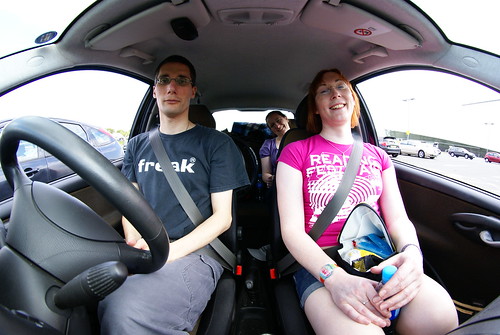In the UK, we have a welfare system. The disability benefit side of it has been being overhauled for the last few years. Labour started it, the Coalition are continuing it, they're using the same company (Atos) to execute it and the same advisor (Lord Freud) to justify it. This is not a party-political issue - red, blue or yellow, to borrow a phrase, they're all in it together.
In summary:
- If you have a doctor's note stating that you are unable to work because of illness, injury or impairment, you apply for Employment Support Allowance (ESA). For the first 13 weeks of your claim you are paid the "assessment phase" rate of up to £67.50 per week.
- If the assessment classifies you as entirely unable to work, and unlikely to ever be able to work, for instance because you are bedbound and terminally ill with a life expectancy of less than a year, you are granted unconditional ESA at the "support" rate of up to £99.85 per week.
- If the assessment decides that, although your disabilities are substantial, you would be able to do *some* work at *some* point in the future with the right conditions/support/equipment/adjustments, then you are awarded ESA at the "work-related activity" rate of up to £94.25 per week. To continue to receive this you must attend regular work-related activities.
- If the assessment determines that your NHS-diagnosed conditions are not severe enough to substantially impair your ability to work in an office environment, or that you would only require minor adjustments, you are deemed "fit to work". You don't get ESA at all, and are placed on Job Seekers Allowance (JSA) which is a smaller amount of money with much higher conditionality attached. If you are fortunate, there may be a note on your jobseeking file excusing you from mandatory application for specific jobs that would aggravate or be incompatible with your condition (for instance someone with speech and hearing difficulties may be "fit to work" but excused from mandatory application for call-centre jobs).
Leaving aside all the arguments about whether the system is fair, how their fitness-to-work tests relate to what is required to perform a job in the real world, and so on... the Department for Work and Pensions released these statistics yesterday, about ESA applicants over the last two years:
- 7% were incapable of any work (Support group)
- 17% were able to do some sort of work given the correct support (Work-related activity group)
- 39% were deemed to be fit for work and were moved onto jobseeker's allowance
- 36% dropped out of the application process
- 1% of applications were still in progress
Today, the Express have taken these numbers and decided that 1% (still in assessment phase) plus 7% (Support group ESA) plus 17% (WRA group ESA) equals 25% of applicants approved to receive some form of ESA. So far, so true. However, their headline screams that therefore the remaining 75% - those moved onto JSA, and those who drop out of the system entirely - are "faking".
This is simply not true.
The fact that a person has failed to score enough points to get ESA (yes, it really is a points-based computer system) does not mean that they scored no points whatsoever, or even that they're not disabled, just that they're not quite disabled enough to be Officially unfit for work. That's why we have the assessment process! To assess people!
To apply to be assessed is not "faking".
To have a level of impairment that falls just short of the ESA bar is not "faking".
There will also be quite a few applicants who suffered an acute injury or illness (for instance, they were in a car accident) and were advised to apply for ESA as a temporary or worst case scenario - but in the 13-week assessment period, they have recovered well so they have been moved to JSA or have returned to work.
To recover from an illness or injury does not mean that the illness or injury was "faked".
There are also the people who get placed onto Jobseeker's Allowance, and go to appeal, and win. The rate of people winning their appeals is around 40% and this increases to 70% where the appellant has someone to represent them. Regrettably, there are also a number of genuinely disabled people who simply don't have the wherewithal to fight an appeal, and have to attempt to survive without the benefits they need. I myself have been in this situation.
To be too ill to fight is not "faking".
There are people who, during their assessment period, are fortunate to find a suitable job which is prepared to make the necessary adjustments, or who, like myself, have enough personal support around them to enable them to be self-employed.
To return to the taxpaying workforce is not "faking".
A very few people will be fortunate enough to have other resources to fall back on. Perhaps an insurance payout of some kind, or a lottery win, or the sale of assets, will save them from the indignity of having to complete a process that treats them as the worst kind of fraudster from beginning to end.
To have alternative resources is not "faking".
Most significantly, there are those who die before the assessment phase is complete.
To die of a condition is perhaps the strongest possible indicator that the condition was not "faked".
I'd provide more concrete statistics, but we don't have them. Once you leave ESA, you're not monitored. We don't know how many of these people have got jobs, have died, have killed themselves, have left the country... no one cares. The Express just goes ahead and calls them all "fakers".


